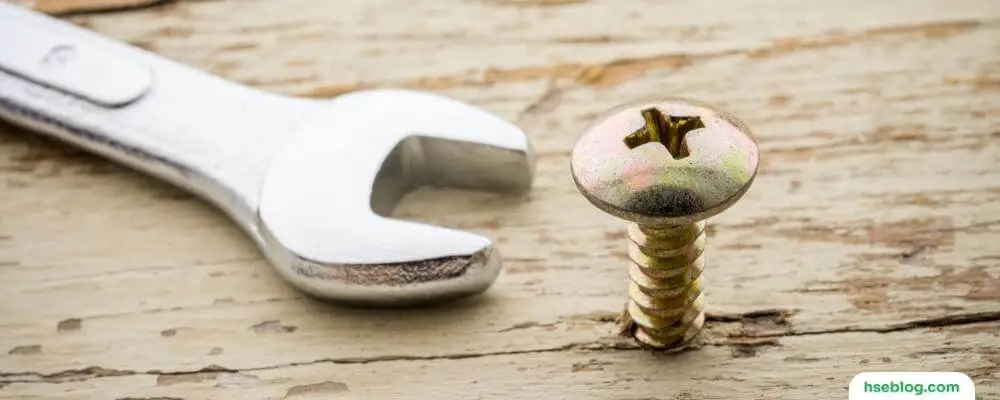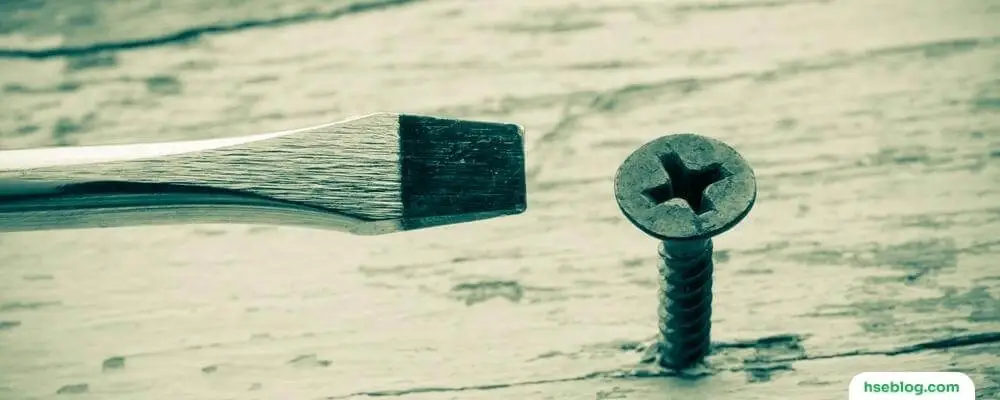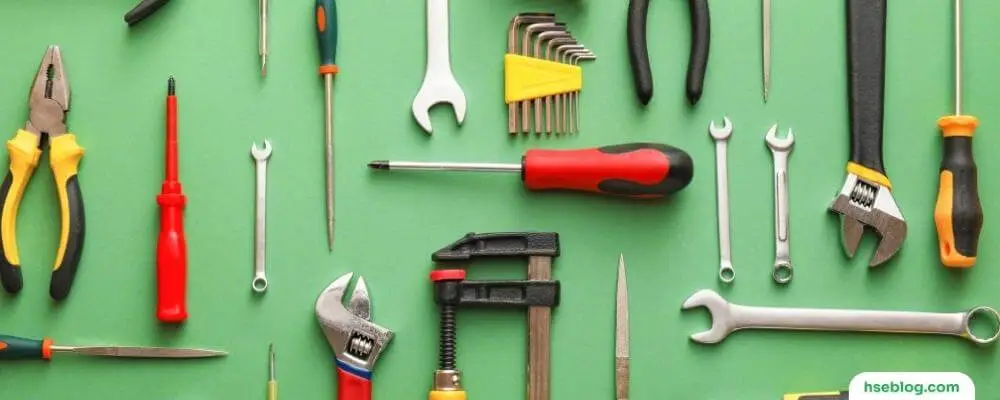Using the right tool for a specific task is not only a matter of convenience but also a crucial aspect of safety, efficiency, and quality. Unfortunately, people resort to using the wrong tools in various situations due to lacking availability, ignorance, or improvisation. However, this practice poses numerous hazards that can have far-reaching consequences. In this blog, we will explore ten hazards that arise when using the wrong tool for the job.
From personal injuries and damaged equipment to fire hazards and environmental damage, we will investigate such choices’ risks and potential consequences. Understanding these hazards serves as a reminder of the importance of selecting the appropriate tools for each task, promoting safety, productivity, and the overall success of any project. So, let’s dive in and explore the potential dangers of using the wrong tool and gain insights on how to avoid them.
Hazards Of Using The Wrong Tool For The Job
Using the wrong tool for a particular task decreases efficiency and increases the risk of hazards. Here is an in-depth look at the hazards associated with using inappropriate tools for specific tasks:
1. Personal Injuries
Using the wrong tool for a job makes the task more difficult and poses a serious risk to personal safety. For instance, using a screwdriver instead of a proper wrench to tighten a bolt could cause the screwdriver to slip, potentially leading to cuts or puncture wounds. Additionally, using pliers instead of a wrench could cause strain on the hand and wrist because it requires more force. The improper grip and excess force needed when using a mismatched tool can lead to repetitive stress injuries.
Furthermore, flying debris could cause eye injuries or other bodily harm if a tool breaks due to improper use. This emphasizes the importance of using the right tools for the tasks, as they are specifically designed to ensure efficiency and safety.
2. Damaged Equipment
When an inappropriate tool is used for a specific task, there is a high likelihood of damaging the equipment or material being worked on and the tool itself. For instance, using a regular hammer instead of a rubber mallet to work on a delicate surface can cause dents or cracks. Similarly, employing a flat-head screwdriver on a Phillips head screw might strip the screw, making it unusable or damaging the screwdriver’s tip. This damage can lead to costly repairs or replacements of parts and tools.
Moreover, a damaged tool or equipment part can cause a cascade of problems, potentially affecting the overall integrity and functionality of the entire system. The financial burden of these damages underscores the importance of selecting the appropriate tools for each specific task.

3. Fire or Electrical Hazards
Using tools not specifically designed for electrical work can create dangerous situations involving short circuits, electrical shocks, or fires. For instance, using a metallic screwdriver without insulation on electrical components can cause a short circuit if the metal comes into contact with live wires, potentially resulting in sparks or electrical discharge. These sparks can be ignited if any flammable materials are nearby, leading to a fire.
Moreover, a person holding a tool that inadvertently contacts an electrical source could receive a severe electrical shock. This is why it’s crucial to use insulated tools designed for electrical work and to take proper precautions, such as turning off the power source, to minimize the risks associated with working around electricity.
4. Poor Quality Work
Using inadequate tools for a task compromises the finished product’s quality, precision, and durability. For instance, using a blunt saw instead of a sharp one might result in jagged cuts and a poor finish, while using an improperly sized screwdriver can strip screw heads, making them both unsightly and structurally weak.
Similarly, using pliers instead of a wrench to tighten nuts and bolts may not secure them adequately, leading to a structure that is not stable or durable. These imperfections reflect poorly on the workmanship and can have long-term consequences. The lack of precision can cause misalignment in parts, leading to accelerated wear and tear and reducing the product’s lifespan or structure. Therefore, it’s essential to use the right tools to ensure the quality and longevity of the work.
5. Slower Progress
Utilizing the wrong tool for a job can considerably hinder the pace of work, leading to inefficiency and unwarranted delays. For instance, using a manual screwdriver instead of an electric drill for many screws will take much longer and require more effort. Similarly, using a small hammer for a job that requires driving large nails will make the task far more time-consuming and strenuous than using a sledgehammer.
Such inefficiencies can have cascading effects, especially in professional settings, where slow progress on one task can delay subsequent tasks, leading to missed deadlines and increased labor costs. It’s imperative to choose tools designed for the specific task to ensure that work progresses optimally and efficiently.

6. Environmental Damage
Using the wrong tools can harm the environment by causing pollution, soil erosion, or harm to natural resources. For instance, using heavy machinery in a sensitive ecological area could compact the soil and disrupt the natural habitat of various species while also causing soil erosion. Similarly, using a tool or equipment that emits high pollutants instead of eco-friendly alternatives can contribute to air and water pollution.
Furthermore, improper handling of materials, such as using a tool that causes spillage of chemicals, can lead to contamination of the surrounding environment. Selecting the right tools, designed with environmental sustainability in mind, is crucial in minimizing environmental damage and promoting responsible stewardship of natural resources.
7. Ergonomic Issues
Using inappropriate tools can lead to strains on the body and result in ergonomic issues, disorders, and discomfort in the musculoskeletal system. For instance, using a tool that is too heavy or has an awkward grip can cause strain in the hands, wrists, and arms, leading to conditions like carpal tunnel syndrome or tendonitis. Similarly, using a tool that requires repetitive motion or maintaining an unnatural posture for extended periods can cause chronic back pain or muscle strains.
These ergonomic issues are detrimental to one’s health and can also affect productivity and quality of work. It is essential to choose ergonomically designed tools to fit the natural movements and postures of the body, thereby reducing the risk of musculoskeletal disorders and ensuring a more comfortable and efficient working experience.
8. Reduced Efficiency
When incorrect tools are used, they often require more effort and time to accomplish a task, resulting in reduced efficiency and productivity and increased fatigue. For example, using a manual rather than a power saw for cutting large pieces of wood would require significantly more physical effort and time, leading to quicker exhaustion and slower progress. This not only lengthens the time needed to complete the task but can also result in inferior quality due to fatigue-induced errors.
The compounded effect of increased effort and time consumption reduces personal or team productivity and elevates the risk of mistakes and accidents as tiredness sets in. Employing the right tools, designed to accomplish specific tasks efficiently, is essential to maintain high productivity levels and reduce physical fatigue.

9. Inaccurate Measurements
Using tools that are not calibrated correctly or are not designed for precise measurements can lead to inaccuracies that significantly affect the overall outcome of a project. For example, using a tape measure that has stretched or worn markings for precise carpentry work can result in incorrect cuts and fittings, compromising the final product’s structural integrity and aesthetics. Similarly, utilizing a non-calibrated torque wrench in mechanical applications could lead to overtightening or under-tightening bolts, affecting the performance and safety of machinery.
Even small measurement inaccuracies can accumulate in fields like engineering and construction and cause substantial discrepancies in the final structure or product. Therefore, it is imperative to use well-calibrated tools specifically designed for precision measurements to ensure accuracy and reliability in project outcomes.
10. Worksite Hazards
Using the wrong tools on a worksite can introduce various hazards that impede safety for the individual using them and others present. For instance, using oversized or inadequate equipment in a confined space can create clutter, reducing mobility and increasing the risk of tripping or collisions. Additionally, the improper use of tools could lead to them being left in inappropriate locations, becoming obstacles that others might not anticipate.
In some cases, the wrong tool might also cause projectiles or splinters to be released into the surrounding area, posing risks to nearby individuals. Moreover, the incorrect tool might require improvised usage methods, which can be unpredictable and dangerous. It’s crucial to use the appropriate tools and follow safety protocols to maintain an organized and hazard-free worksite, ensuring the well-being of all individuals involved.

Examples Of Using The Wrong Tool For The Job
Using the wrong tool for a job can lead to inefficiency, potential damage, and frustration. Here are some examples of using the wrong tool for the job:
- Using a Knife Instead of a Screwdriver: Someone might use a knife to try to turn a screw when they don’t have a screwdriver. This is ineffective and dangerous as the knife can slip and cause injury.
- Using Pliers to Tighten Bolts Instead of a Wrench: Using pliers instead of a wrench to tighten bolts might not secure them properly and can damage the bolt head. This compromises the integrity of the assembly and may also harm the pliers.
- Using a Flat-head Screwdriver on a Phillips Head Screw: This can cause the screw to strip, making it difficult to remove or tighten properly. It may also damage the tool itself.
- Using a Hammer Instead of a Rubber Mallet: When assembling furniture or working on delicate surfaces, using a metal hammer instead of a rubber mallet can cause damage to the material, such as dents or cracks.
- Using a Paperclip to Eject a CD Tray: While it might work, it is not recommended and can potentially damage the ejection mechanism.
- Using Metal Tools for Electrical Work: Using non-insulated metal tools while working on electrical components can lead to electrical shocks or short circuits.
- Using a Sledgehammer for a Job Requiring a Claw Hammer: This can cause excessive force to be applied, damaging the materials being worked on.
- Using a Table Knife Instead of a Can Opener: Opening a can with a table knife is inefficient and poses a high risk of cutting oneself or damaging the knife.
- Using Regular Pens for Precision Drafting: Precision is key in drafting or architectural drawing. Using regular pens instead of technical drawing pens can lead to inaccurate and unprofessional results.
- Using a Chainsaw to Trim Small Branches Instead of Pruning Shears: Using a chainsaw for small trimming tasks is overkill and dangerous. Using pruning shears for small branches is much safer and more efficient.
These examples highlight the importance of using the correct tool for the job to ensure efficiency, safety, and quality in the work being done.
Conclusion
In conclusion, using the wrong tool for a job can lead to many hazards and adverse consequences. Personal injuries, damaged equipment, fire hazards, environmental damage, reduced efficiency, inaccurate measurements, ergonomic issues, worksite hazards, poor quality work, and slower progress are all potential risks that arise when the appropriate tools are not utilized. These hazards can result in physical harm, financial losses, delays, and subpar outcomes. It is crucial to prioritize safety, efficiency, and precision by selecting the right tools for each task.
By doing so, we can mitigate risks, ensure quality workmanship, protect the environment, and ultimately enhance productivity and success in our endeavors. Remember, using the right tool is not just a matter of convenience; it is essential to achieving optimal results while safeguarding ourselves and those around us.

